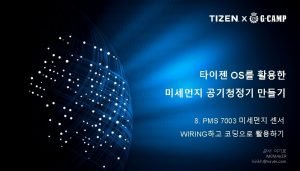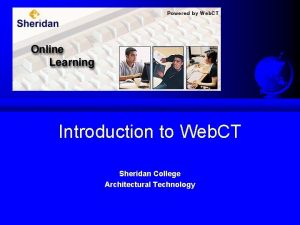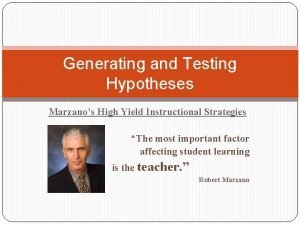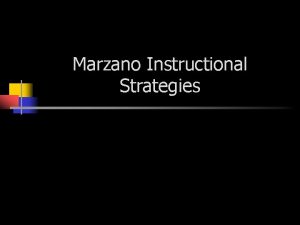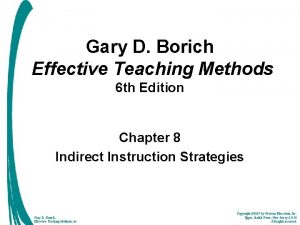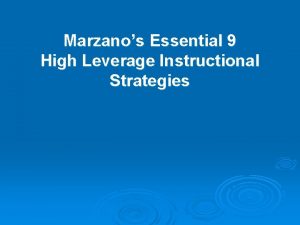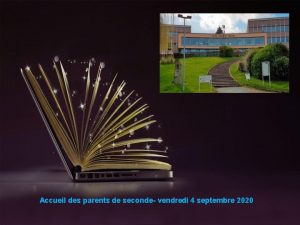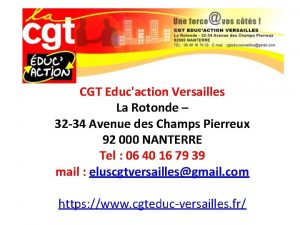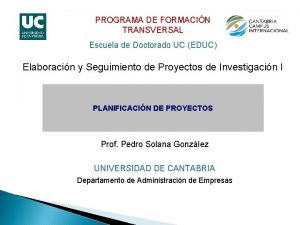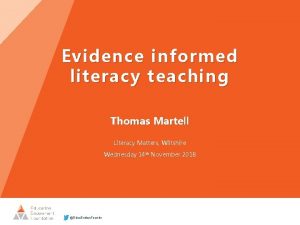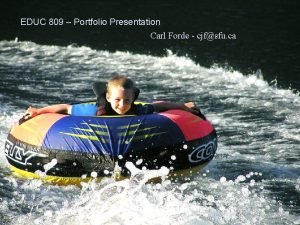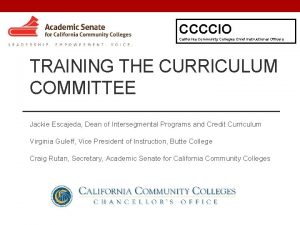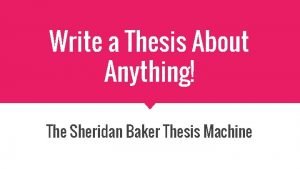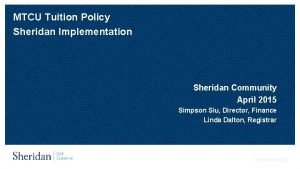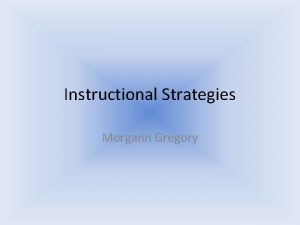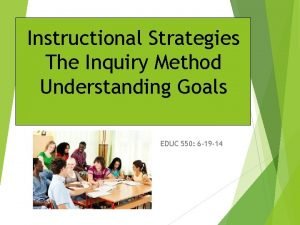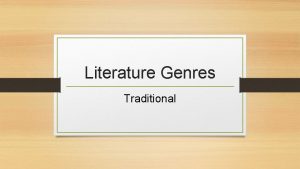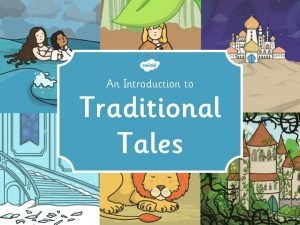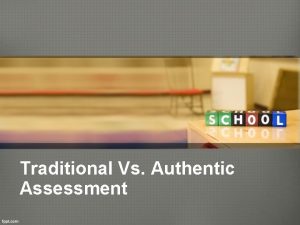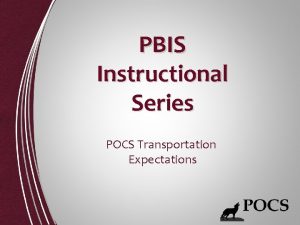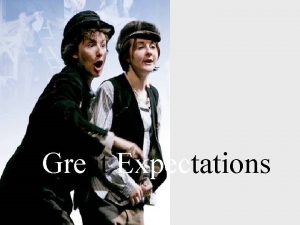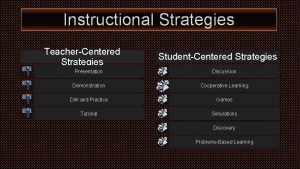Instructional Strategies EDUC 7003 Sheridan College Traditional Expectations















- Slides: 15

Instructional Strategies | EDUC 7003 | Sheridan College Traditional Expectations vs. Contemporary Strategies Lydia Spanoudis Mark Lee Dennis Cutajar

Agenda • Introduction • Review • Group Activity • Discussion • Summary, Q&A, Handouts • Feedback • End

Learning Outcomes By the end of this lesson, the learner will be able to: • Understand the differences between traditional student expectations and contemporary learning • Discuss active and passive learning instructional strategies • Identify what learners feel and expect from different instructional strategies

Review Seminar Objective • To teach adult learners about the issues related to the challenges of traditional student expectations versus contemporary instructional strategies

Review Needs Analysis 1. Educator’s Perspective – Understand differences; Improve curriculum design; Effective delivery of active learning = Effective Learning 2. Learner’s Perspective – Students expect to receive lectures but prefer to work individually and on group projects; Learning styles and preferences vary significantly 3. Community Perspective – Effective higher education improves skills and knowledge = better quality of life and economic prosperity

Review Audience Analysis • • • Over 25 years of age Multi-generational, from millennials to baby boomers Multi-cultural Employed in business and government sectors Careers in-transition, job-seekers, semi-retired, or persons seeking personal growth opportunities • Small class size of approximately 10 students, plus an instructor • Occupations include existing professional instructors, trainers, administrators seeking to improve their skills and knowledge • Future professional instructors, trainers, administrators seeking a career change

Review Learner Expectations – Reflection and Discussion Before you embarked on your journey into adult learning: • What were you classroom expectations? • What types of instructional strategies did you expect?

Group Activity • Topic: Reflective Communication • Group 1: Traditional Instruction (Lydia) • Group 2: Non-Traditional Instruction (Mark) • Learning Outcomes 1. Explain in your own words what is communication 2. Distinguish between the three types of communication models

Evaluation Facilitated Group Discussion • Facilitators – Summarize • Discussion • Benefits of the instructional method applied in your group? • Challenges of the instructional method used? • How could the lessons have been more effective?

Summary and Feedback Key Messages: • Learner expectations and preferences are different • Active and passive instructional methods have benefits and weaknesses • As an instructor know your context (needs analysis) • Know your audience’s style, expectations and preferences • Set goals, learning outcomes, select a mix of instructional methods from your diverse toolkit, apply informal and formal feedback techniques

Northwest Iowa Community College. (2011, February 11). What is Active Learning? [Video Retrieved from https: //www. youtube. com/watch? v=Us. DI 6 h. Dx 5 u. I. file].

Question and Answer Handouts • Learning Pyramid • Feedback Form

Individual Reflection • How do you prefer to learn?

Thank you very much for your participation

Resources • Bozarth, J. (2012). From Traditional Instruction to Instructional Design 2. 0. T + D, 66(3), 65 -67. • Definition of communication. (2017). Merriam-Webster. Retrieved from https: //www. merriamwebster. com/dictionary/communication • Mishra, S. (2017). Models of communication. Retrieved from https: //www. businesstopia. net/communication • Northwest Iowa Community College. (2011, February 11). What is Active Learning? [Video file]. Retrieved from https: //www. youtube. com/watch? v=Us. DI 6 h. Dx 5 u. I • Sander, P. , Stevenson, K. , King, M. , & Coates, D. (2000) University Students’ Expectations of Teaching. Studies in Higher Education. 25(3), 309 -323. • The World Bank. Achieving Transfer of Learning. Retrieved from https: //siteresources. worldbank. org/DEVMARKETPLACE/Resources/Handout_The. Learnin g. Pyramid. pdf • UTM Experiential Education Office. Experiential Learning Activities. Retrieved from http: //www. utm. utoronto. ca/experience/sites/files/experience/public/shared/Team%2 0 Based%20 Problem%20 Solving%20 Activities%20 -%20 UTM%20 EEO. pdf
 Pms7003 datasheet
Pms7003 datasheet Sheridan college architectural technology
Sheridan college architectural technology Collide records
Collide records Marzano's 9
Marzano's 9 Marzano's high yield instructional strategies
Marzano's high yield instructional strategies Marzano strategies
Marzano strategies Indirect instruction method
Indirect instruction method Marzano nine essential instructional strategies
Marzano nine essential instructional strategies Pronote baratte
Pronote baratte Cgt education 92
Cgt education 92 Educ formación transversal
Educ formación transversal @educ
@educ Sfu educ 311
Sfu educ 311 Chief instructional officer
Chief instructional officer California community college chief instructional officers
California community college chief instructional officers Sheridan baker model
Sheridan baker model
